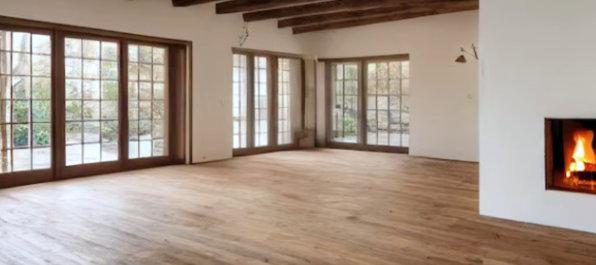
2 minute read
laying a wooden floor
Handy Tips To Transform Your Space With Wooden Flooring
There’s nothing that can transform a room or open space in your home more than a wooden floor. It can make a room appear bigger, warmer, and just adds a really homely look throughout, as well as being easier to maintain and clean, especially with a large family and little kids.
Advertisement
Spills that might ruin a carpet can be easily mopped up and cleaned away in minutes, and it’s hard wearing solution that will last for years to come.
Whilst it’s essential to get it fitted correctly, with most people bringing in the professionals is the best step to take. However if you think you are up to the job, here are some handy hints to transforming your space with wooden flooring.
You can choose from solid wood flooring which is, as it says on the tin, a solid piece of week from top to bottom, whilst engineered wood consists of a layer of wood veneer on top of a plywood base.
The type of wood flooring you choose and the way you install it depends on the type of sub-floor which is the base floor underneath your wood floor.
Check Your Sub Floor
There are three common types in your property. This is the base floor that will sit beneath your wood flooring. There are three common types of sub-flooring
1) Concrete/cement/stone: you can use solid wood which can either be nailed down on the battens or glued to the sub floor or choose engineered wood flooring which can be glued down or installed to float.
2) Plywood/chipboard: again, you can use nailed or glued down solid wood or float or glue down engineered flooring.
3) Particle board: wood flooring must be glued down and engineered flooring can be glued down or floated. Underfloor heating
If you have under-floor heating you should choose engineered wood flooring over solid wood. This is because it’s more durable and able to cope with extremes in temperature and can either float or be glued down. you apply to the sub-floor. Then simply lay your wood flooring.
If you have a concrete sub-floor you should lay a two part damp proof membrane to prevent damp from rising.
Layinig Your Floor
Whatever method you choose, to get a really great result, lay your planks in the direction that leads the eye to a certain focal point of the rooms, like a lovely fireplace or other main features in the room.
Glued down flooding is very secure and all you need are the sections of flooring and a suitable adhesive. Your flooring retailer will be able to recommend a bonding agent, which
Allow your floor to settle as long as possible before walking on it so that the adhesive is completely bonded. Floating flooring: this is the easiest DIY flooring method, which is perfect if you’re laying your first floor. First you need to put down a underlay to act as a moisture barrier and as insulation. Then apply PVA glue to fit the tongue and groove parts together as you lay your flooring.
Nailed down flooring is an ideal way to securely fit new wood flooring. Although it’s time consuming and hard work, it’s very effective and straightforward.

To save time it might be worth investing in or hiring a nail gun, especially if you are installing wood flooring in a large space. Another tip is to use a ply foam underlay to hold flooring securely in place and to prevent squeaking floorboards









